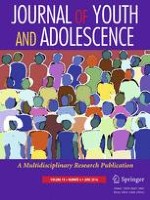07-09-2015 | Empirical Research
The Educational and Employment Aspirations of Adolescents from Areas of High Deprivation in London
Gepubliceerd in: Journal of Youth and Adolescence | Uitgave 6/2016
Log in om toegang te krijgenAbstract
Adolescents from areas of high deprivation are often assumed to have low aspirations for the future. However, recent research has suggested otherwise and there have been calls for more substantial investigation into the relationship between poverty and aspiration. This article reports levels and variation in aspiration from 1214 adolescents (49.5 % male; 50.5 % female) living in areas of high deprivation across 20 London boroughs. A strength of this study is our large and diverse population of low socio-economic status (SES) adolescents, comprising of white British (22 %), black African (21 %), black Caribbean (9 %), Indian/Pakistani/Bangladeshi/Other Asian (24 %), mixed ethnicity (9 %), and 15 % defining themselves as Other. Our measures indicated a high group level of reported aspiration with notable variations. Females reported higher educational (but not occupational) aspirations than males; white British students reported lower educational and occupational aspirations than other ethnic groups; and black African children reported the highest educational aspirations. Perceived parental support for education had the largest positive association with aspirations. In contrast to previous findings from studies carried out in the United States, aspirations were found to be negatively associated with perceptions of school and school peer environment. These measures explored feelings of safety, happiness and belonging within the school environment and school peer group. We discuss possible explanations for this unexpected finding within our population of adolescents from UK state schools and how it might affect future policy interventions. This study makes an important contribution to the literature on adolescent aspirations because of the unique nature of the data sample and the multiple domains of functioning and aspiration measured.
